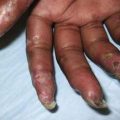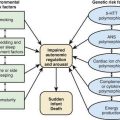Chapter 262 Yellow Fever
Barrett AD, Monath TP. Epidemiology and ecology of yellow fever virus. Adv Virus Res. 2003;61:291-315.
Barwick R, Eidex RB, for the Yellow Fever Vaccine Working Safety Group. History of thymoma and yellow fever vaccination. Lancet. 2004;364:936.
Belsher JL, Gay P, Brinton M, et al. Fatal multiorgan failure due to yellow fever vaccine-associated viscerotropic disease. Vaccine. 2007;25:8480-8485.
Centers for Disease Control and Prevention. Transmission of yellow fever vaccine virus through breast-feeding—Brazil, 2009. MMWR Morb Mortal Wkly Rep. 2010;59:130-132.
Centers for Disease Control and Prevention. Yellow fever vaccine: recommendations of the Advisory Committee on Immunization Practices (ACIP). MMWR Recomm Rep. 59(RR-7), 2010.
Domingo C, Niedrig M. Safety of 17D derived yellow fever vaccines. Expert Opin Drug Saf. 2009;8:211-221.
Ellis BR, Barrett AD. The enigma of yellow fever in East Africa. Rev Med Virol. 2008;18:331-346.
Halstead SB. Emergence mechanisms in yellow fever and dengue. In: Scheld WM, Craig WA, Hughes JM, editors. Emerging infections 2. Washington DC: ASM Press; 1998:65-80.
Khromava AY, Eidex RB, Weld LH, et al. Yellow fever vaccine and updated assessment of advanced age as a risk factor for serious adverse events. Vaccine. 2005;23:3256-3263.
Monath TP. Treatment of yellow fever. Antiviral Res. 2008;78:116-124.
Monath TP. Yellow fever and dengue: the interactions of virus, vector and host in the re-emergence of epidemic disease. Semin Virol. 1994;5:133-145.
Mutebi JP, Rijnbrand RC, Wang H, et al. Genetic relationships and evolution of genotypes of yellow fever virus and other members of the yellow fever virus group within the Flavivirus genus based on the 3′ noncoding region. J Virol. 2004;78:9652-9665.
World Health Organization. Progress in the control of yellow fever in Africa. Wkly Epidemiol Rec. 2005;80:50-55.







